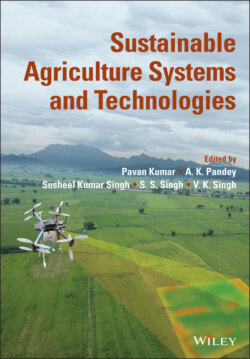Читать книгу Sustainable Agriculture Systems and Technologies - Группа авторов - Страница 32
2.4 Reducing Emission of Greenhouse Gases
ОглавлениеThe good agronomic practices (GAPs), such as, conservation tillage, organic nutrient sources along with inorganic nutrient sources, weeds, insect pest, and disease management along with adequate irrigation water management in diversified production system can greatly reduce greenhouse gases in the atmosphere. The selection of climate smart crops which require comparatively lesser nutrient, water from production system and have lesser impact of biotic and abiotic stresses are the essential components of the crop diversification. In this category, oilseeds, pulses are good examples; for these crops, the GHC emission is also less. Conservation tillage and deficit irrigation can also substantially minimize CO2 and N2O emission. Appropriate use of the crop residue and complete banning of its burning reduces the generation of CO2, N2O, and CH4 to a significant extent. Crop diversification ensures greater functional biodiversity to cropping systems and it also regenerates biotic interactions underpinning yield‐supporting ecosystem services (Rathore and Shekhawat 2020). It embraces a variety of practices encompassing the management of crops, noncrop habitats, soil, and landscapes (Cardinale et al. 2012; Wagg et al. 2014; Renard and Tilman 2019; Tamburini et al. 2020).
